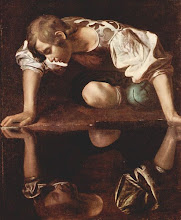 Leuconoe, the sister of Arsippe, tells the next story. Venus and Mars were having an affair, and the Sun told Vulcan, Venus's husband, about it. Vulcan set a trap for the lovers, catching them in bed together with a net and inviting all the gods to come and see them. In revenge for her humiliation Venus caused the Sun to fall in love with Leucothea. This made Clytie, who some say was Leucothea's sister, jealous, and she told their father, who had Leucothea buried alive. The Sun still took no notice of Clytie, who, mad with love for him, sat on the ground watching him pass overhead. She took root and became a heliotrope.(wikicommons picture of heliotrope by Augustin Roche licensed under Creative Commons)
Leuconoe, the sister of Arsippe, tells the next story. Venus and Mars were having an affair, and the Sun told Vulcan, Venus's husband, about it. Vulcan set a trap for the lovers, catching them in bed together with a net and inviting all the gods to come and see them. In revenge for her humiliation Venus caused the Sun to fall in love with Leucothea. This made Clytie, who some say was Leucothea's sister, jealous, and she told their father, who had Leucothea buried alive. The Sun still took no notice of Clytie, who, mad with love for him, sat on the ground watching him pass overhead. She took root and became a heliotrope.(wikicommons picture of heliotrope by Augustin Roche licensed under Creative Commons)The first part of the story (also told by the bard Demodocus in Homer's Odyssey) was a very popular theme for artists. Our first representation comes from a tapestry in London's Victora and Albert museum, though the accompanying audio commentary is singularly uninformative about the tapestry, concentrating instead on telling the story of Vulcan, Mars and Venus.
The 1555 picture by Tintoretto shown below is now in Munich's Alte Pinakothek. Vulcan has obviously come home unexpectedly and Mars is hiding under the table.

In the 1630 picture below (now in Madrid's Prado), Velazquez has chosen to show Apollo bringing the news of his discovery to Vulcan in his forge.

Most artists, however, have been attracted by the theme of Mars and Venus being caught in Vulcan's net. A 1534 bowl painted by Giorgio Andreoli is in St. Petersburg's Hermitage. A few years later around 1540 Maarten van Heemskerck painted a picture now in Vienna's Kunsthistorisches Museum, again showing the lovers caught in the net with all the gods looking on. In the mid 1550s Guglielmo della Porta produced a bronze plaquette showing Vulcan's capture of Venus and Mars (now in Washington's National Gallery of Art). Los Angeles's J. Paul Getty Museum has a 1585 drawing by Golzius of Venus and Mars Surprised by Vulcan, which may have served as an inspiration for this painting by de Clerck now in a private collection in Belgium. Also in the Getty is Wtewael's Mars and Venus Surprised by the Gods, painted from 1610 to 1614.
Lovis Corinth's 1909 picture shown below is in Munich's Neue Pinakothek, but does not appear to be on their website. The picture is called "Homeric Laughter, First Version", but I have not found a second version.

The contemporary artist Nancy Farmer has a picture of Hephaestus's Trap.
The statue of Clytie below by Parodi is now in Genoa's Palazzo Reale, but does not appear to be on its website. The bust of Clytie is by George Watts, and is now in London's Guildhall Art Gallery.


Lastly, here is Evelyn de Morgan's 1886 picture of Clytie. I've been unable to find the present location but it was sold in 1991, so it is probably in a private collection.

(all pictures in public domain except where stated otherwise)





No comments:
Post a Comment